UPDATED! Bloodhound: Breed of the Week
Are Bloodhounds Good City Dogs?
My favorite dog at the 2015 edition of the Westminster dog show — my Weimeraner bias aside — was the Bloodhound. This big, wrinkly hound has a face that you fall for. Big brown eyes set on a massive head, this dog has a way about him that says “Hug me!”
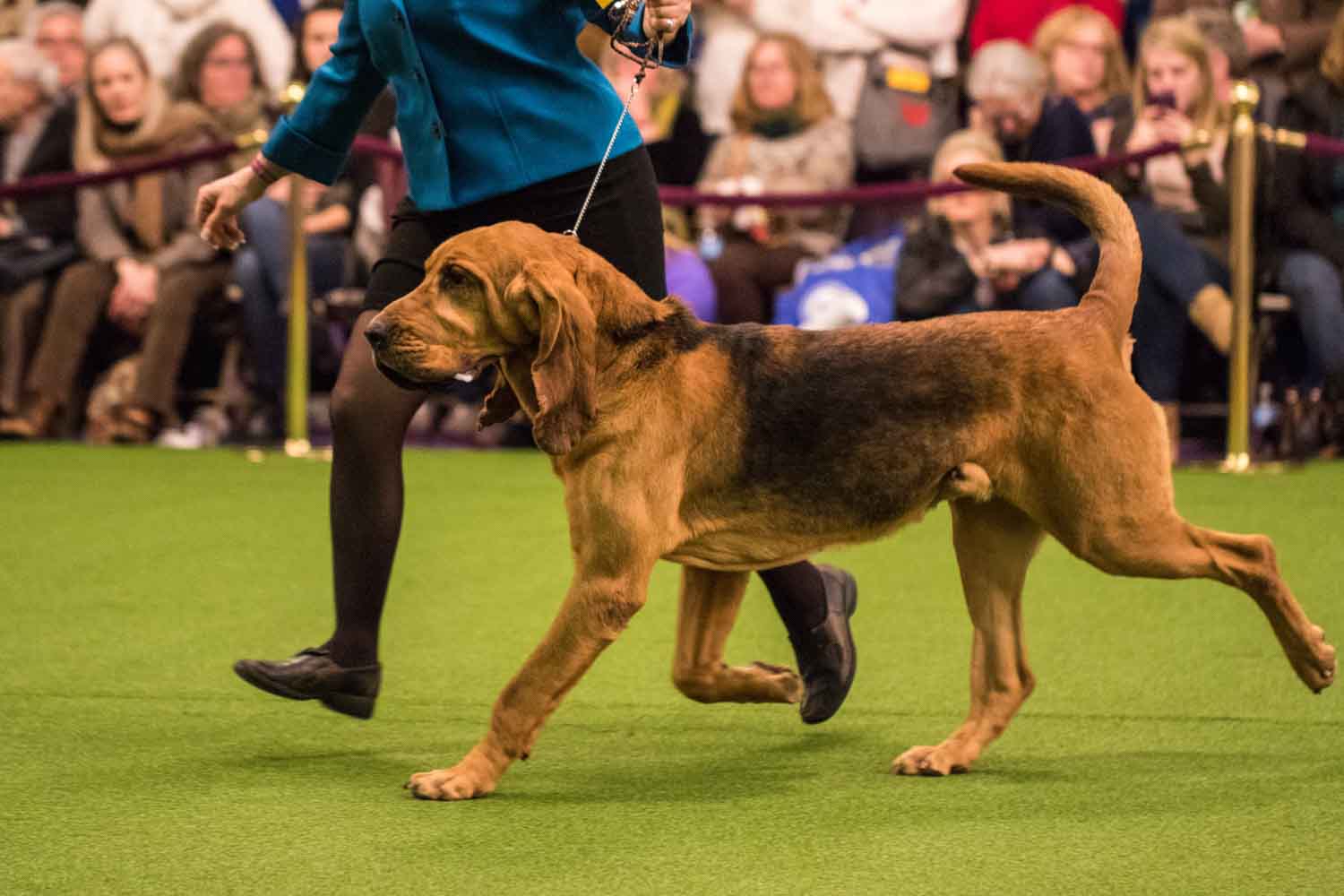
If you are of a certain age, there are some famous Bloodhounds you might be familiar with: Duke, Jed Clampet’s loyal companion from the TV show The Beverly Hillbillies; McGruff The Crime Dog; and in one of his very first appearances, Pluto of Disney fame, was a Bloodhound.
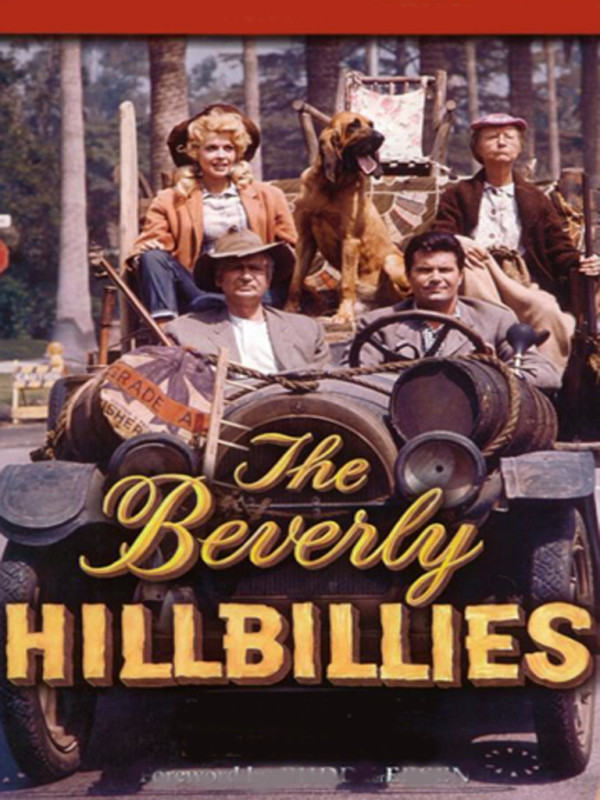
The Bloodhound is a very old breed. They date back more than one thousand years. According to the American Kennel Club: “In the 3rd century A.D., Claudius Aelianus noted the Bloodhound in his Historia Animalium describing a dog that was unrivaled for its scenting powers and determination to stay on the trail until the quarry was located.”
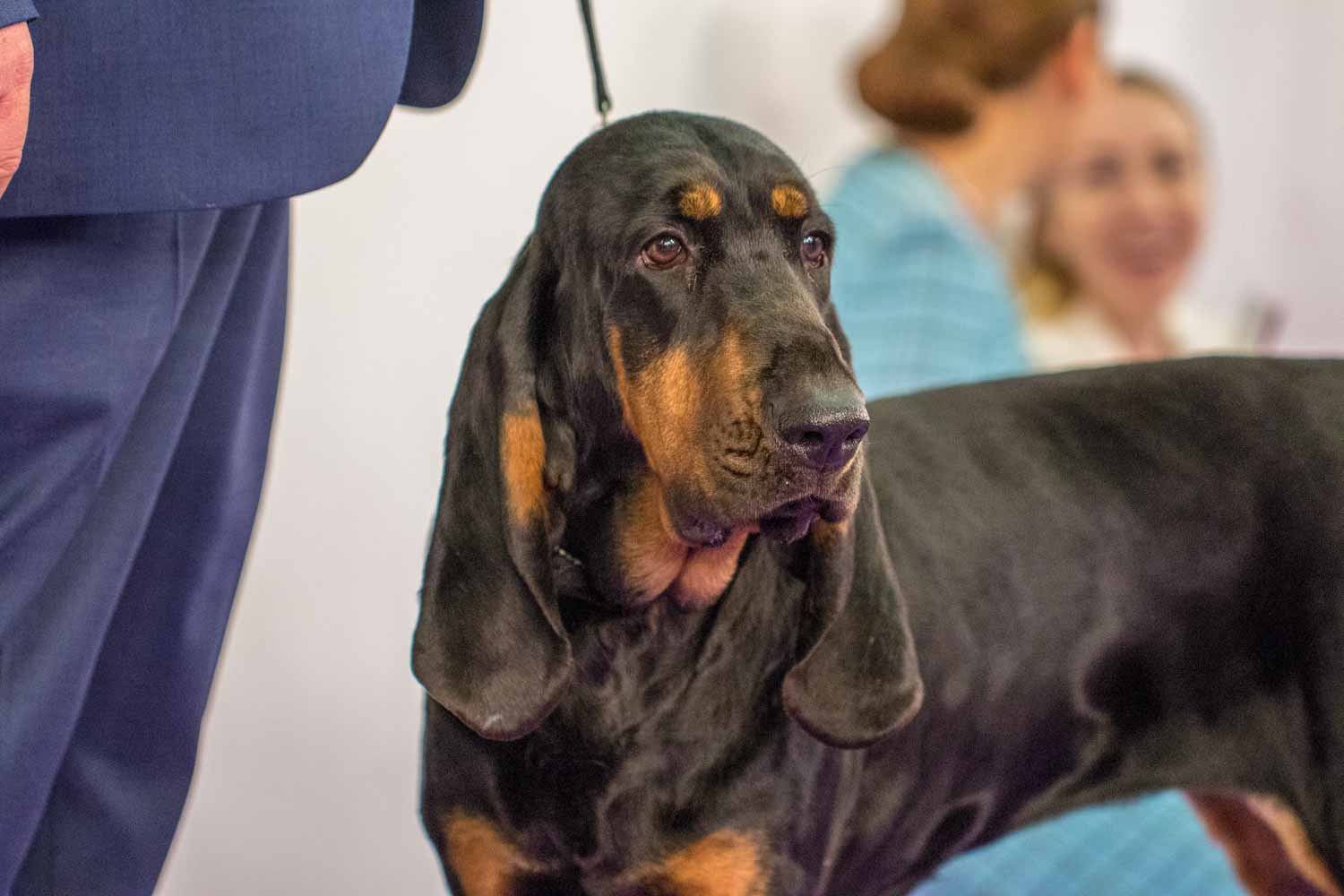
Like its distant cousin, the Mastiff, Bloodhounds are considered “grandfather” to many breeds. Dogs like Boxers, Coon Hounds, Weimaraners, and even Bassett Hounds can trace their lineage back to the Bloodhound. Any dog that is a tracker is most likely related to the Bloodhound.
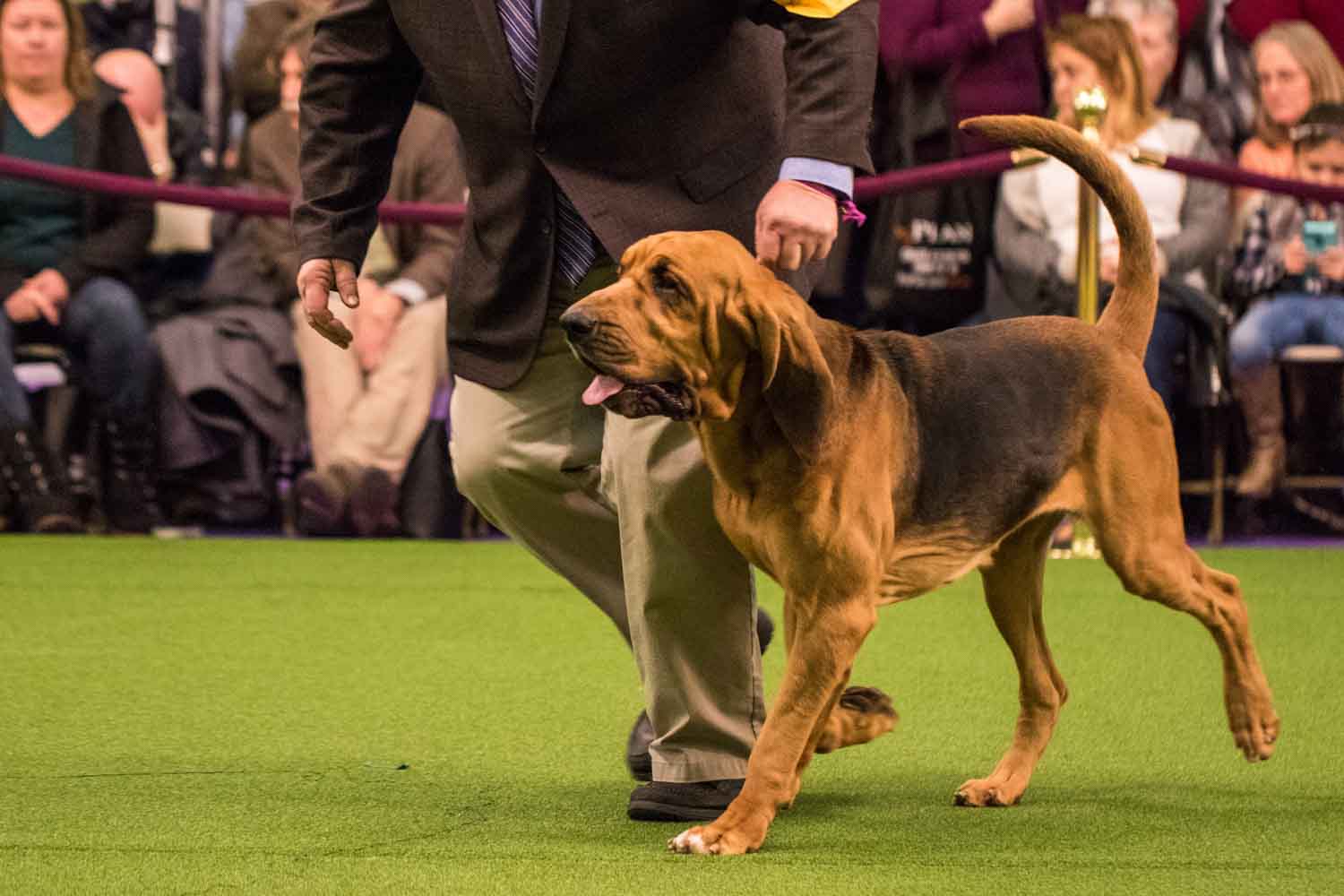
The Bloodhound was designed to track. Its wrinkled face, extra long ears and massive olfactory gland make this dog such a superb tracker that the results of its tracking efforts can be used as evidence in court. The Bloodhound can follow a scent more than 300 hours old. When it goes into scent mode it may be very hard to regain its attention, so training is a must.
The modern Bloodhound is a large dog. Males can weigh up to 110 pounds and 27 inches at the shoulder. Females are just a tad smaller. They are loyal, loving and very good with children. If you are considering a Bloodhound, remember they are known for two other attributes besides tracking: drooling and their infamous baying. The sound a bloodhound makes can be heard a mile away. They also need a lot of exercise, this dog can walk for hours; one Bloodhound tracked a scent more than 100 miles. They require very little grooming, although their ears are so long you may need to check them daily to make sure they haven’t been getting into their food. They are also susceptible to many of the ailments that effect other large breed dogs such as bloat and hip dysplasia.
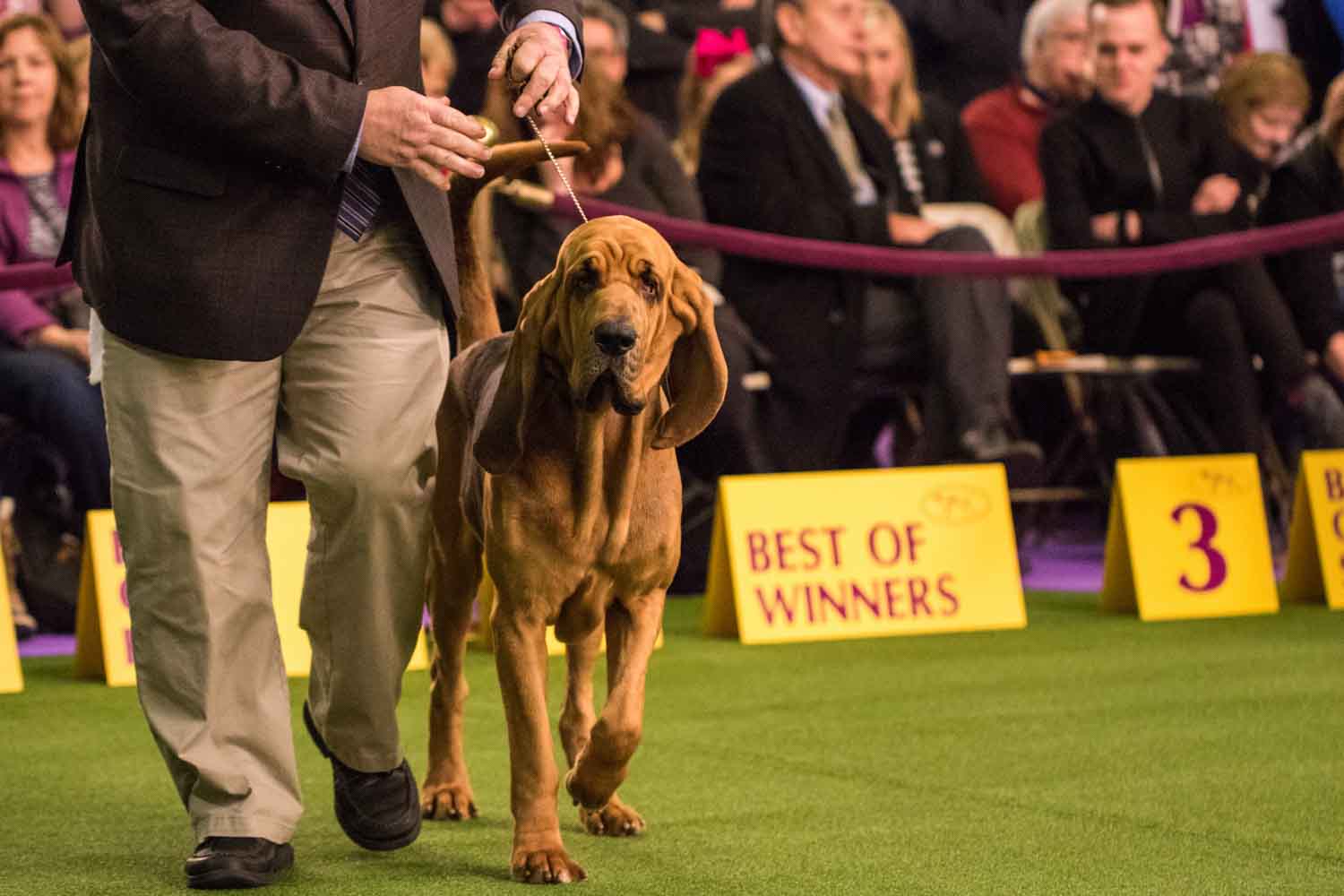
Do Bloodhounds Bark?
Bloodhounds are probably not the best choice for city living.
Training for city dogs is super important. You want your pooch to obey you when you tell her to behave in your building’s public areas. Bloodhounds, unfortunately are not the easiest dogs to train. They score “Lowest” when it comes to understanding new commands. They obey first commands about 25% of the time or worse according to Stanley Coren, a professor of psychology at the University of British Columbia who studies dog behavior. That means it takes about 80 to 100 repetitions for them to learn new commands.
While they known as robust barkers, they don’t really bark when they are not supposed to. UC Davis researchers Benjamin and Lynette Hart devised a chart ranking dogs by the likelihood of barking at inappropriate times. On a scale of one to ten — with one being the least offensive barkers and ten the most excessive barkers — they get a one rating. In fact. they are the number one dog on the list for barking at appropriate times… while they are tracking something! Click here for more on Urban Dog’s take on barking.
Although they may not be a great choice for an Urban Dog, the Bloodhound would make a wonderful family pet for those who have the the time and space for this lovable Goliath.
For tips on how to find a pet-friendly apartment in New York and other cities read Urban Dog’s guide. Big dogs pose a particular challenge, but don’t worry, you can find places that accept large breed dogs.
And here’s an adorable chorus of Bloodhound puppies singing for their supper.
To see more of Natalie Siebers’ photos, check out her website.






